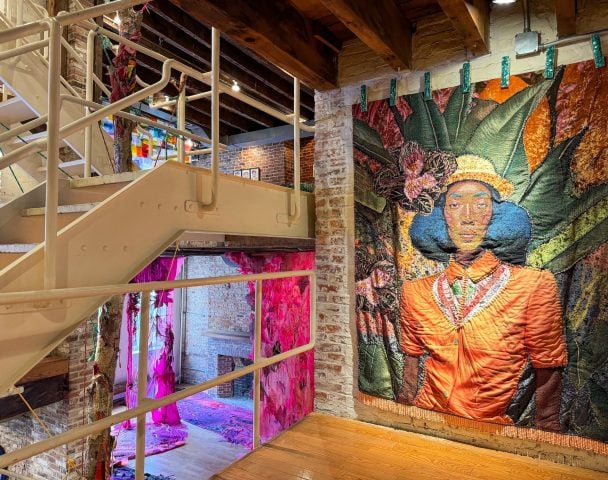The story of Rosa Parks, an unquestioned American hero, is permanently etched into the annals of American history. But the future of the house where the civil rights activist sought refuge after fleeing Montgomery, Alabama, amid death threats currently hangs in limbo. After a journey from Detroit to Berlin and back to the US, Parks’s former home failed to sell at auction last month. Three weeks later, a bidding war for the house is being played out, artnet News has learned. But a buyer has yet to seal the deal.
It has been a grueling month for Ryan Mendoza, the Berlin-based American artist who helped save the little wooden structure by reconstructing it in the German capital last year. But Mendoza is staying positive. He hopes that Parks’s house, which failed to meet its $1 million reserve when it went to auction at Guernsey’s, will ultimately become a national monument to the civil rights movement somewhere in the US. “Rosa Parks is having a teaching moment, once again, through this house,” he says.
Speaking from his Berlin studio, Mendoza says that negotiations are ongoing between a couple businessmen from Detroit, a university, and a foundation. He hopes the foundation’s bid will prevail.
Arlan Ettinger, the president of Guernsey’s, explained that it was a glitch that caused the house to go unsold at auction: “Minutes after the house was offered and did not get sold, I received a phone call from two gentlemen.” At the very last instant, they had tried to register online, but their application to become bidders was not accepted due to the timing. “Unfortunately, these gentlemen fell between the cracks,” he says.
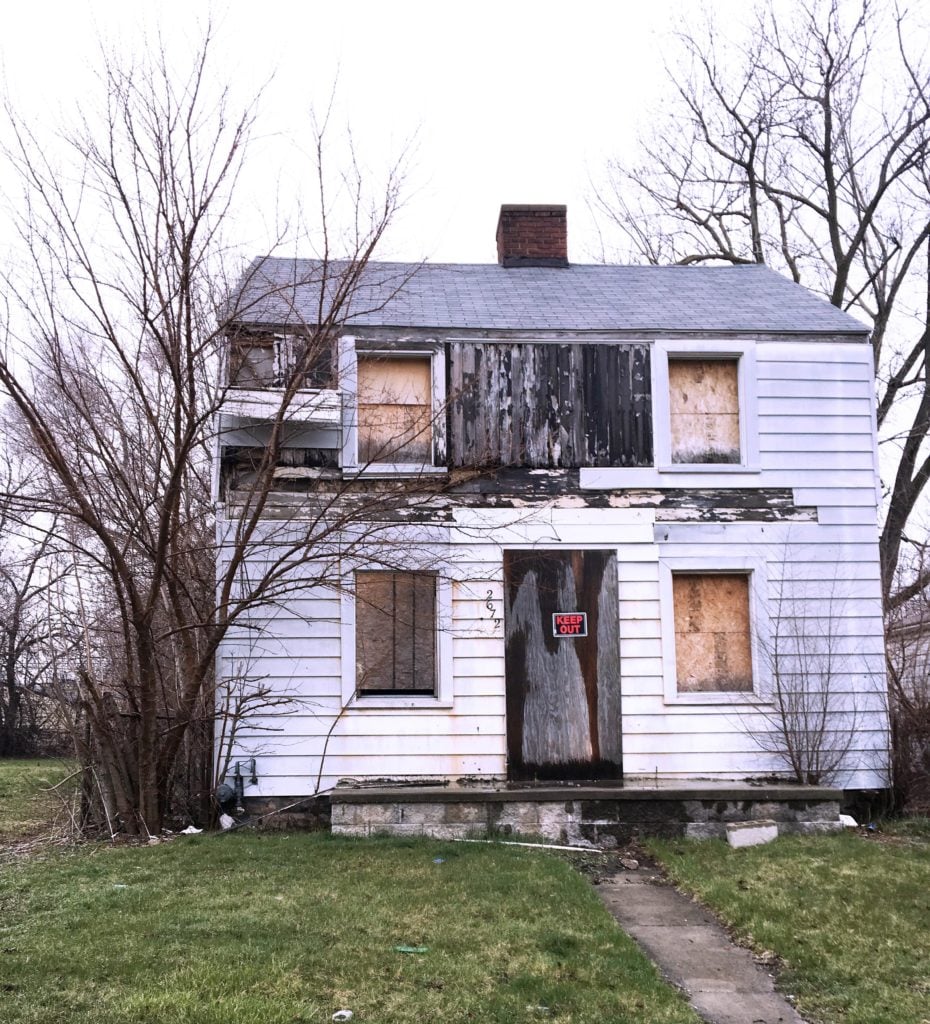
The Rosa Parks House, built in 1936, in an abandoned state before deconstruction. It was located on 2672 S. Deacon St. a redlined district in South West Detroit. Photo: Fabia Mendoza.
Leaving Detroit
The Rosa Parks House, which was owned by her brother, had been languishing in an abandoned state and was on the City of Detroit’s demolition list when Parks’s niece, Rhea McCauley, stepped in and bought her childhood home from the city for $500 in 2014 with the hope of restoring it. Located in Southwest Detroit, the house, which was built in 1936, would become an example of the kind of overcrowded living conditions many African Americans experienced at that time, especially when fleeing the South: Parks lived there with McCauley and 16 other family members in the late 1950s. After taking ownership of the home, Parks’s niece enlisted Mendoza’s help, who took it apart and resurrected it on his property in the German capital.
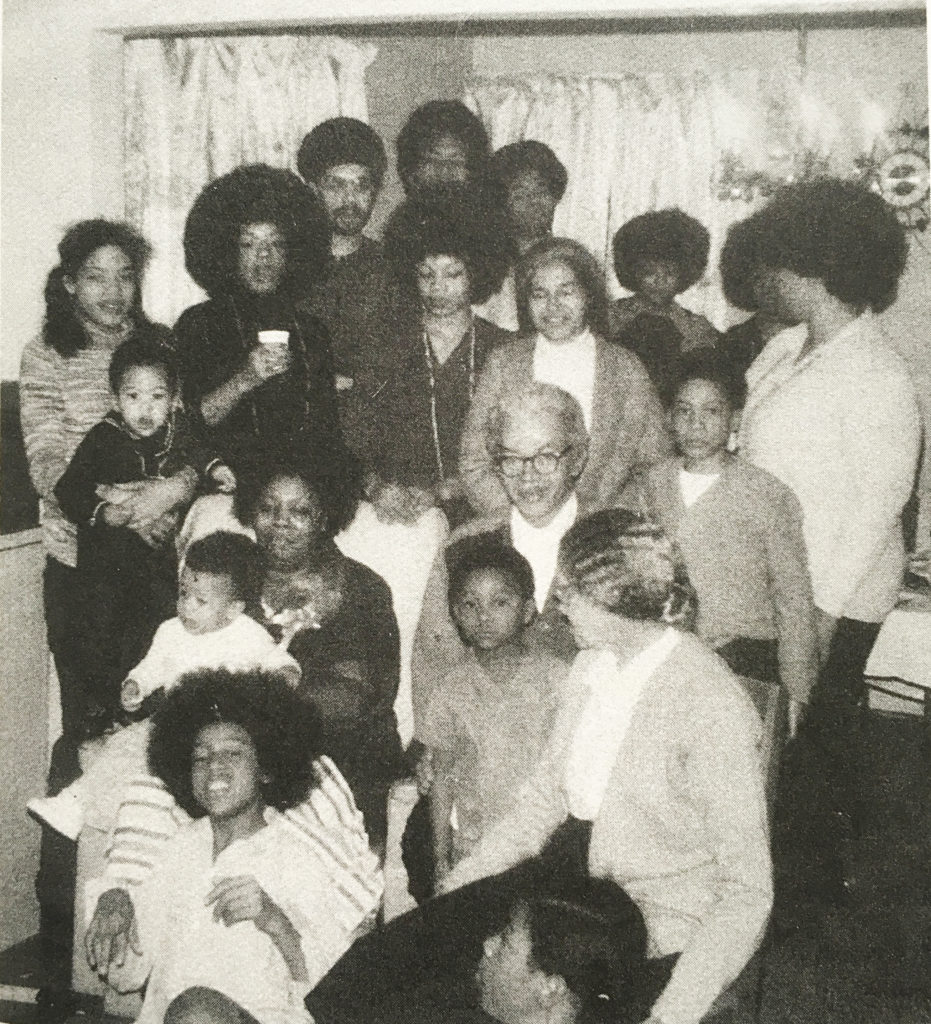
Entire McCauley Family with Rosa Parks at the house S Deacon St in 1972. Courtesy of the McCauley Family.
Though McCauley and Mendoza may have at first seemed like an unlikely pairing, the artist was familiar with Detroit and its history. And this wasn’t the first house he’d saved and moved to Europe. In 2016, he took an anonymous wooden house from Detroit to Rotterdam in the Netherlands. Mendoza’s wife, Fabia, documented the process of taking down and re-erecting the two homes in the feature-length film The White House. McCauley and Mendoza will split the profits of the Parks home sale.
“The unsung story behind the Rosa Parks House is one of redlining, housing inequality, and its persistent effects on millions of Americans today,” Mendoza says, referring to racial segregation of neighborhoods. “From Brooklyn to Oakland, with pen in hand, 80 years ago, city planners mapped out where Blacks would live.” Mendoza sees a connection between the segregated planning of inner cities in postwar America and Germany in the 1930s. “These were, in reality, ghettos, comparable to the ones created in Germany,” he says.
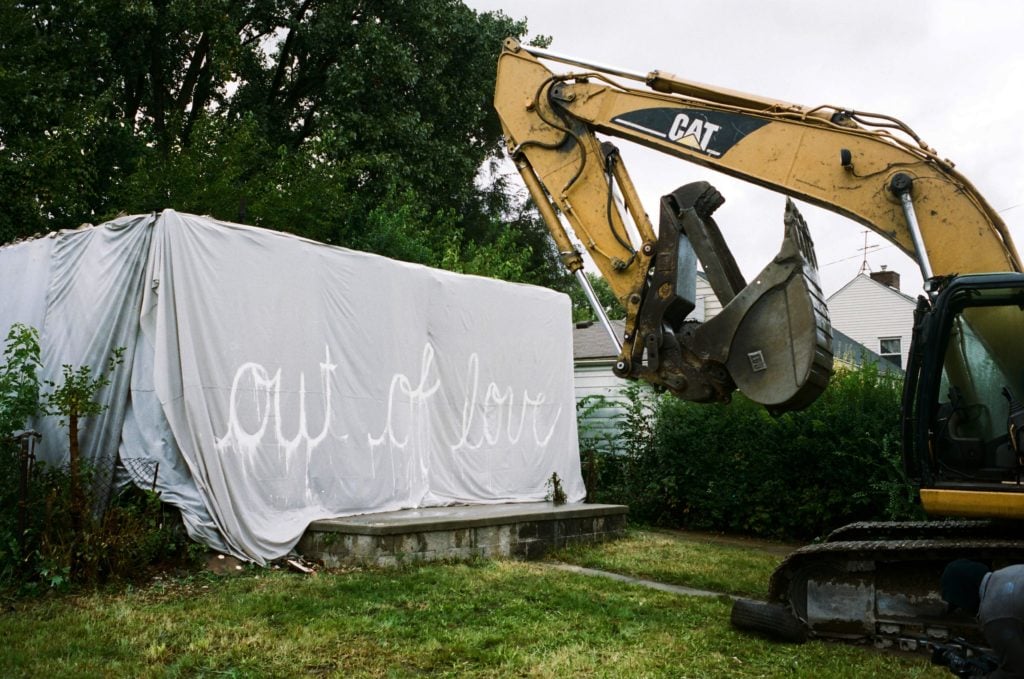
“Out of love” written on The Rosa Parks House before its final demolition.
Mendoza explains that Parks’s home was in a “redlined” neighborhood of Detroit, which was demarcated as less valuable. His goal with the project is multifaceted, but, above all, he wants to give this chapter of Parks’s story proper value. Back in the late 1950s during the time Parks stayed at the home, residents—a majority of whom were African American—had less access to essential goods and services, from banking and healthcare to supermarkets. The otherwise unremarkable two-story building, he says, is a symbol of the systemic discrimination against African Americans through racist zoning laws. It was yet another form of segregation that Parks fought valiantly throughout her life, most famously when she refused to move to the back of a bus in Montgomery, Alabama, on December 1, 1955.
After McCauley gifted the house to Mendoza in the summer of 2017, he disassembled it by hand, so that he could take it to Germany as part of what he calls “The Rosa Parks House Project.” Packing and shipping cost the artist around $13,000. “America will have to show that they really care about her legacy,” McCauley told Fox 2 last year as the house headed off to voluntary exile in Germany.
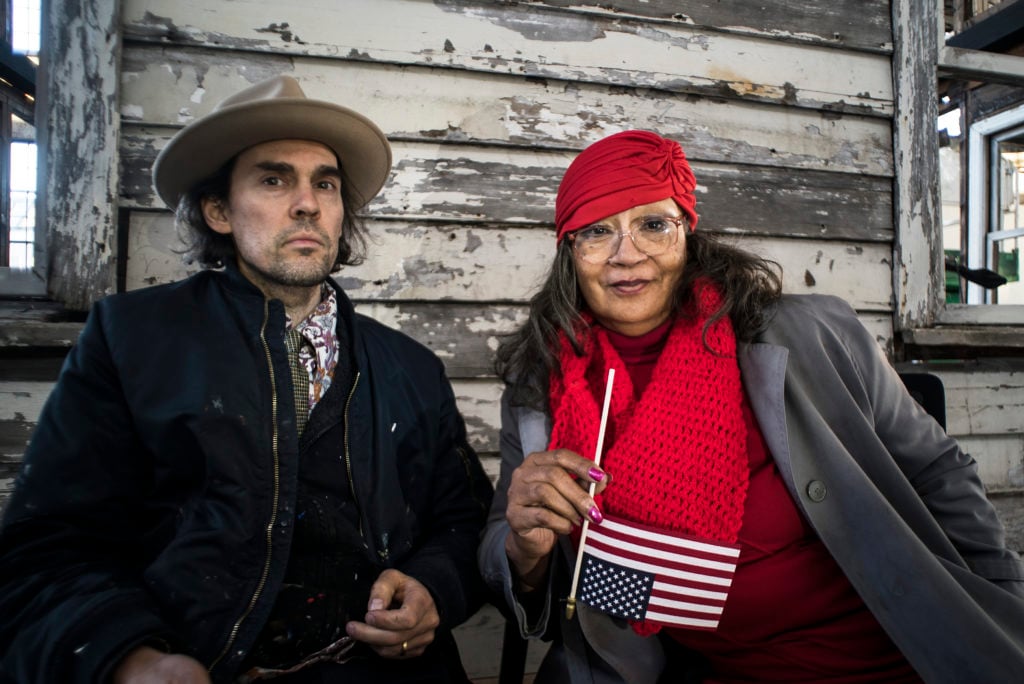
Mendoza and Rhea McCauley at the half rebuilt Rosa Parks House in Providence, NY. Photo: Fabia Mendoza.
A Warm Welcome in Berlin
The property where Mendoza has his Berlin studio—Rosa Parks’s house stood in the courtyard—formerly belonged to the family of a U-boat commander, the artist recently learned. “How warmly the house was received here in Berlin indicates an evolution of perception,” he says. “Germany had lived through what despotism brings.” Parks’s home was an architectural anomaly in the European city, but it was also a symbol of a triumph.
Despite Mendoza’s optimism, Germany is struggling with a right-wing resurgence and the recent online hashtag #MeTwo—a play on the Me Too movement—has been bringing a greater voice to the racism and intolerance experienced by many people in the European nation, including citizens, immigrants, and refugees. Nevertheless, Mendoza’s project drew a crowd and the vice-chancellor of Germany, Sigmar Gabriel, even came to visit the house. He stressed its significance to America and declared that it must return to the US, so it can be seen by Americans. He even wrote Michelle Obama a personal letter about the situation. “All of this can be felt in the simple two-floor wooden structure,” Mendoza says.
In fact, the artist had never intended to keep the house in Berlin. The goal, he says, was always to return it to the US and have it stand as a national monument to the civil rights movement. Enter New York-based Guernsey’s, which has sold some admittedly unusual objects. Earlier this year, it auctioned the Chelsea Hotel doors that had belonged to various celebrities and were salvaged from the street by a former tenant.
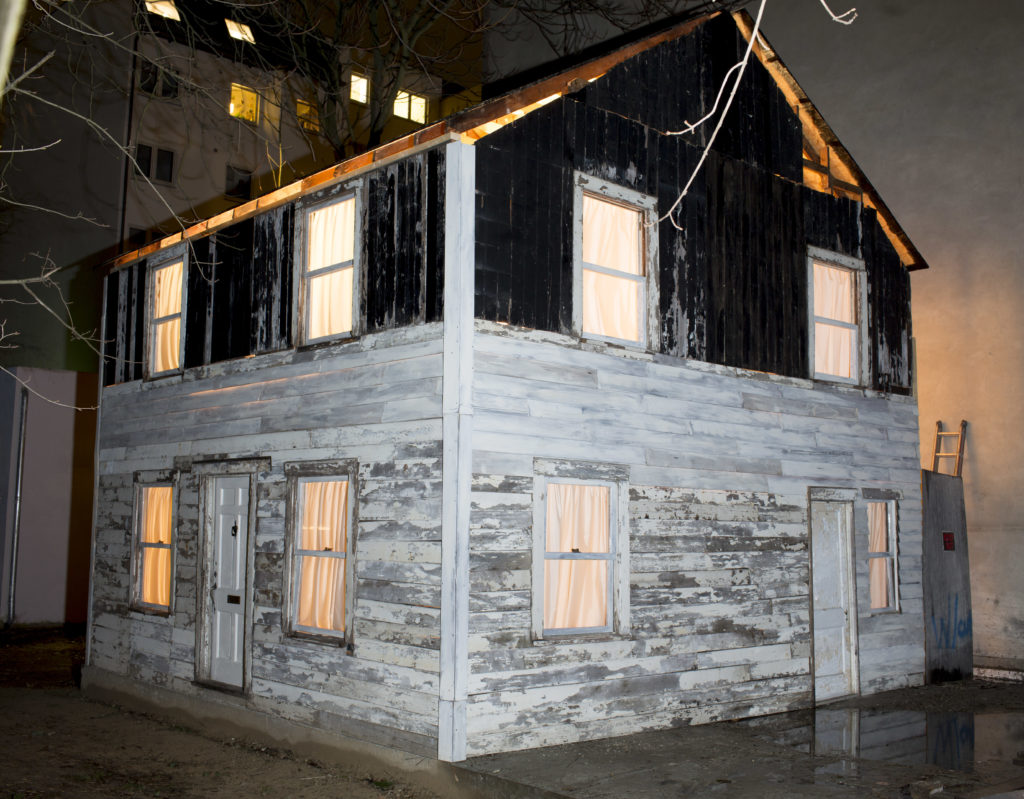
Rosa Parks House being reconstructed in Berlin, February 2017. Photo by Fabia Mendoza.
Will History Repeat Itself?
The auction of Parks’s house caught the international media’s attention—but on the day of the sale, no buyer came forward. And this was not the first time that Guernsey’s has failed to immediately place objects tied to Parks’s legacy. The house has managed the sale of Parks’s artifacts and archive since 2014 after a Detroit court ruled that the archive should be kept together and be accessible to the public. Rosa Parks kept everything: letters, documents, journal entries (beginning from when she was 12 years old), and observations from the first time she met Martin Luther King Jr. “Everyone we contacted claimed to desperately want the archive, but no one wanted to pay for it,” Ettinger recalls.
Ettinger went to the press after the archive failed to sell at auction. Howard Buffett, the son of billionaire investor Warren Buffett, eventually bought Parks’s papers for $4.5 million and gave them to the US Library of Congress in 2014.
If all else fails, theatre and visual artist Robert Wilson and his Watermill Art Foundation in Long Island, New York, have also offered to take the house for a temporary exhibition. Another option, Mendoza says, is to take it back to Detroit. After all the media it has garnered, Mendoza hopes the mayor of Detroit, Mike Duggan, will finally speak to the situation. Until now, he has remained silent. (The mayor’s office did not respond to our request for comment.)
For now, the austere structure—and everything it symbolizes about the African American experience—awaits for a buyer while it sits quietly in Guernsey’s storage facility in upstate New York. As of this writing, the home’s destiny looks promising if uncertain. “There are 1,500 monuments to the Confederacy, which is absurd,” Mendoza says. “There are 76 monuments to the civil rights movement. Let this be the 77th.”
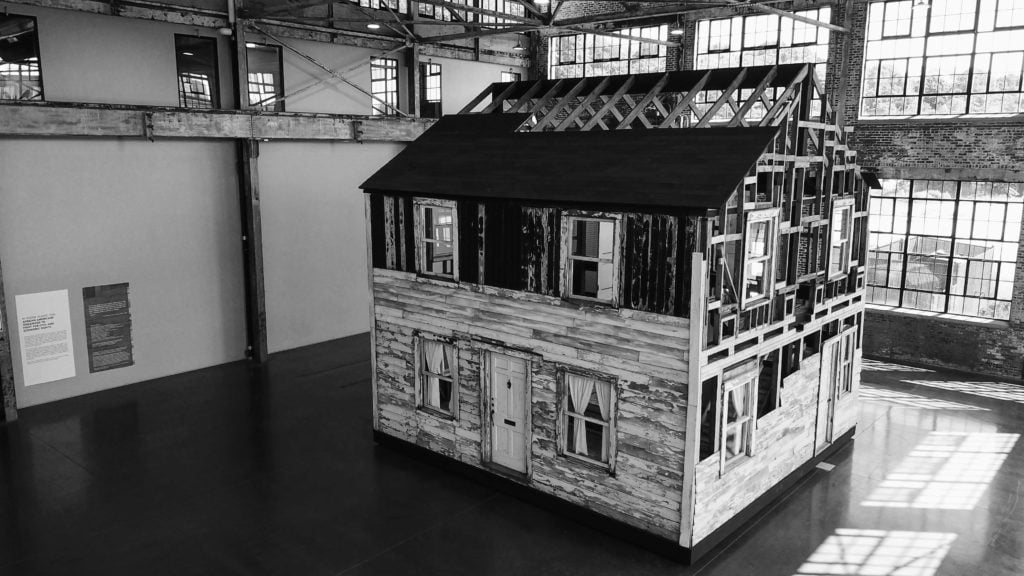
Rosa Parks’s former home in storage in Providence, Rhode Island, ahead of the unsuccessful auction.
Follow Artnet News on Facebook:
Want to stay ahead of the art world? Subscribe to our newsletter to get the breaking news, eye-opening interviews, and incisive critical takes that drive the conversation forward.













